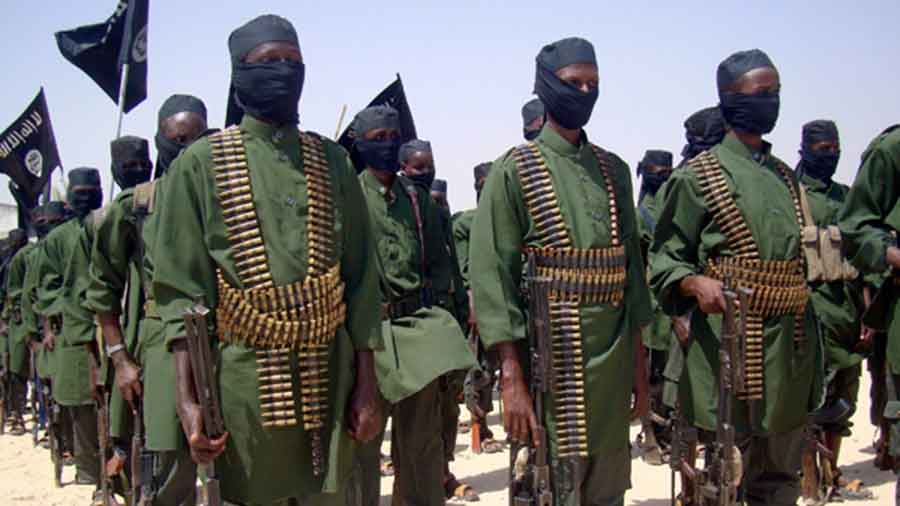Al-Qaeda came into being in 1988-89, in Peshawar, Pakistan. The nine-year-long Soviet occupation of Afghanistan had turned into an ignominious retreat at the hands of Mujahedeen and Taliban. These were CIA-raised groups of non-state actors who had fought the Soviets viciously. Osama bin Laden, a Saudi billionaire’s son, basking in the glory of jihad had no problem in raising cadres, and arranging weapons and funds for his fledgling organisation. A new era in terrorism by non-state actors against Nation States was unfolding. Soon al-Qaeda started engaging US targets in Saudi Arabia and even on the United States’ soil. It was a dominant terror group based in Afghanistan-Pakistan till September 11, 2001 attacks on World Trade Centre Twin Towers happened. It forced the US to declare the ‘War on Terror’.
Al-Qaeda may not have a tight control over its affiliates; however, it perhaps never had such an objective. It wanted always to provide a platform for unification or cooperation of Jihadi groups globally, and of course providing the spiritual and moral leadership.
Free World’s Riposte
Since US-led NATO-International Security Assistance Forces (NATO-ISAF) entered Afghanistan in 2002, al-Qaeda has been suffering losses of its leaders and cadres not only in Afghanistan and Pakistan but also in Yemen. Many of its cadres are languishing in Guantanamo prison. Senior leader like Khalid Sheikh Mohammad has been tried for 9/11 attacks and other ‘war crimes’.
On May 2, 2011, al-Qaeda chief Osama bin Laden, who was living in a ‘safe house’ provided by Pakistan Inter-Services Intelligence (ISI) very near to Abbottabad cantonment in Pakistan since 2005 was killed in a daring raid by US Navy SEALs on his hideout. US drone attacks inside Afghanistan, along Pakistan’s western border areas and in Yemen have delivered a body blow to al-Qaeda.
The Cancer Spreads
But still, al-Qaeda has not only managed to survive but proliferated in the North Africa and Middle East. Iraq, even after US troops’ complete withdrawal in 2011 is still smouldering. Unabated sectarian violence in Iraq has claimed innumerable lives. Syrian civil war has polarised regional Sunni and Shia militant organisations, who are either fighting to keep President Bashar al-Assad’s regime afloat or to wrest new cities and towns from the government forces. World powers have failed to see the larger fallout of this conflagration, in terms of al-Qaeda spreading into newer areas. The US wants the al-Assad regime to go; whereas Russia, China and Iran are helping the regime with weapons and diplomatic support. In this tussle al-Qaeda has benefitted the most. Scores of al-Qaeda cadres from North Africa, Yemen and Iraq have converged on to Syria to fight against the Bashar al-Assad’s forces.
Consolidation of Global Jihad
Since 2011, Egypt has witnessed unprecedented political turmoil. In July 2013, Egyptian Army ousted President Mohamed Morsi, resulting in violent clashes between the army and the cadres of Muslim Brotherhood and other Salafist organisations. Egyptian army is also battling insurgents in the Sinai Peninsula. Al-Qaeda’s presence has been reported in Egypt, like in Syria.
In 2007, a local militant group of Northwest Africa, Salafist Group for Preaching and Combat became al-Qaeda affiliate and rechristened itself Al-Qaeda in Islamic Maghreb (AQIM). AQIM is most active in Tunisia, Algeria, Mali, Niger and Morocco. In 2012, AQIM and other Islamist groups captured Northern Mali, forcing France to commit troops to evict militants. AQIM is led by Abdelmalek Droukdel.
Al-Qaeda is well-entrenched, though dormant, in Afghanistan-Pakistan and has linkages with Taliban, Tehrik-e-Taliban Pakistan (TTP) and Haqqani network.
In 2009, al-Qaeda groups in Yemen and Saudi Arabia formed Al-Qaeda in the Arabian Peninsula (AQAP), which has emerged as the most dangerous al-Qaeda affiliate in the world. Focus has now shifted from Afghanistan-Pakistan to Arabian Peninsula, because of AQAP’s ability to plan and carry out attacks on the US and Western targets. AQAP is headquartered in Yemen and is led by Nasser al-Wuhayshi.
In 2013, an affiliate of al-Qaeda, Islamic State of Iraq and the Levant (ISIS) was formed by amalgamating many regional terror groups. ISIS’ arc of influence covers Iraq, Syria, Jordon, Israel, Palestine, Lebanon and South Turkey. ISIS has sent numerous fighters to Syrian conflict and has achieved a dominating position in the internecine wars with other rebel groups like Free Syrian Army there. Abu Bakr al-Baghdadi is the leader of ISIS.
Al-Qaeda is well-entrenched, though dormant, in Afghanistan-Pakistan and has linkages with Taliban, Tehrik-e-Taliban Pakistan (TTP) and Haqqani network. Recent geographical spread of al-Qaeda raises few concerns regarding regional stability, energy supply, maritime transportation and existence of certain Nation States. See Map. Its presence and growing influence in the North Africa and Middle East endangers sources of energy and maritime transportation. It makes Gulf monarchies anxious, who are trying hard to insulate their populace from the fallout of the Arab Spring. North Africa—a politically unstable and impoverished region provides al-Qaeda a firm base and catchment area for recruits. North Africa’s proximity to Europe across Mediterranean is another source of worry. ISIS’ presence in the Levant region is particularly worrisome for Israel and Turkey. Instability in this region will only strengthen the hands of al-Qaeda.
Al-Qaeda Enfeebled?
Recently Ayman al-Zawahiri, fugitive chief of al-Qaeda issued guidelines to the cadres of his terrorist organisation. He asked them to refrain from attacking Muslims (non-Sunni sects), Christians, Hindus and Sikhs residing in Muslim countries and avoid senseless collateral damage that occurs in the attacks on mosques, public places and other gatherings. He also emphasised on the need of taking up Dawa—missionary work by group members for general public. Zawahiri reiterated al-Qaeda’s global mission of establishing Islamic states in the North Africa and Middle East; destroying Israel and freeing Muslim brethren from the rule of infidels from Caucasus to Kashmir. He also sought co-operation from other terror groups in carrying out joint attacks.
Analyst saw this change of heart, as a sign of al-Qaeda’s weakening and inability of Ayman al-Zawahiri to wield effective control over the activities of the organisation and its affiliate groups that have spawned in the North Africa and Middle East. Holed up somewhere in the Federally Administered Tribal Areas of Pakistan for years and harried by US drone attacks, Zawahiri has not been able to move around, garner support, motivate cadres and control the operations of al-Qaeda. As a result, various independent regional terror groups have sprung up in the region.
Combined strength of al-Qaeda, Taliban, Haqqani Network and TTP may be a formidable force for ANSF to reckon with.
It was also inferred from the statement that al-Qaeda may now concentrate on carrying out target-specific attacks, targeting important leaders, security forces and its adversaries.
Terror Consortium’s Recent Spurt
On August 3, US issued a global terror alert anticipating a grave danger of terror attacks on its embassies and citizens travelling abroad particularly in the North Africa and Middle East. US National Security Agency, that monitors communications through mobile phones and emails had intercepted a string of conversations between AQAP leaders, hinting at large scale attack against US interests.
The US closed down its 22 embassies and consulates across North Africa, Middle East and Asia. It also issued travel advisory to all its citizens travelling in this part of the world to observe precaution. Britain, France and Germany also shut down their embassies in Sanna, Yemen.
Everything passed off peacefully; little realising that the threat would manifest into a daring terror attack by a band of Somali terrorists on Westgate Centre shopping mall in Nairobi, Kenya on September 21, leaving 68 dead and 175 injured. The operation was reminiscent of November 26, 2008 Mumbai Attacks in its precision, lethality and international repercussions. The attack was carried out by the cadres of al-Shabaab—a Somali terror organisation, which has joined al-Qaeda in 2011.
Ayman al-Zawahiri is perhaps mulling over the group’s post-2014 strategy, when NATO-ISAF withdraws from Afghanistan leaving Afghan National Security Forces (ANSF) to defend the country from Taliban onslaught. Combined strength of al-Qaeda, Taliban, Haqqani Network and TTP may be a formidable force for ANSF to reckon with. Zawahiri also talks about Kashmir, in post-2014 scenario, there may be a situation when cadres of al-Qaeda, Taliban, Haqqani Network and TTP are directed in to Kashmir, as it happened after 1988, when out-of-job Mujahedeen found themselves employed by ISI for fighting a jihad in Kashmir.
Al-Qaeda: Strengths and Likely Objectives
Al-Qaeda still has worldwide presence, either directly or through its affiliates. Has it really become weak and less effective as being widely believed?
An objective evaluation will throw up an answer that is both ‘yes’ and ‘no’. While the focussed and protracted US onslaught has led to al-Qaeda losing its leaders and field commanders, it has been able to progress towards one of its prime objectives: Occupy the pedestal for Islamist jihad globally. Hither-to-fore localised jihadist outfits like AQIM, AQAP and ISIS have affiliated themselves with al-Qaeda. Its area of influence has considerably increased. Taking advantage of political unrest, social upheavals and continuing conflicts in West Asia and large parts of Africa, it has been able to consolidate in its old areas of operations while penetrating new nations.
Its ability to carry out focussed high value attacks may have diminished; however the combined strength of its affiliates allows the staging of such attack as on the Kenyan Mall or Pakistani Church attacks.
Al-Qaeda may not have a tight control over its affiliates; however, it perhaps never had such an objective. It wanted always to provide a platform for unification or cooperation of Jihadi groups globally, and of course providing the spiritual and moral leadership.
As it stands, the al-Qaeda with its bases along Mediterranean Africa is poised to provide better support to small groups in Southern Europe. The turmoil in Syria provides an opportunity to spread its tentacles in Turkey where a degree of stricter adherence to religiosity seems to be creeping in.
The US withdrawal from Afghanistan will also weaken Pakistan and allow al-Qaeda to turn its guns around more deliberately. The larger availability of cadres will lead India also facing a graver situation.






